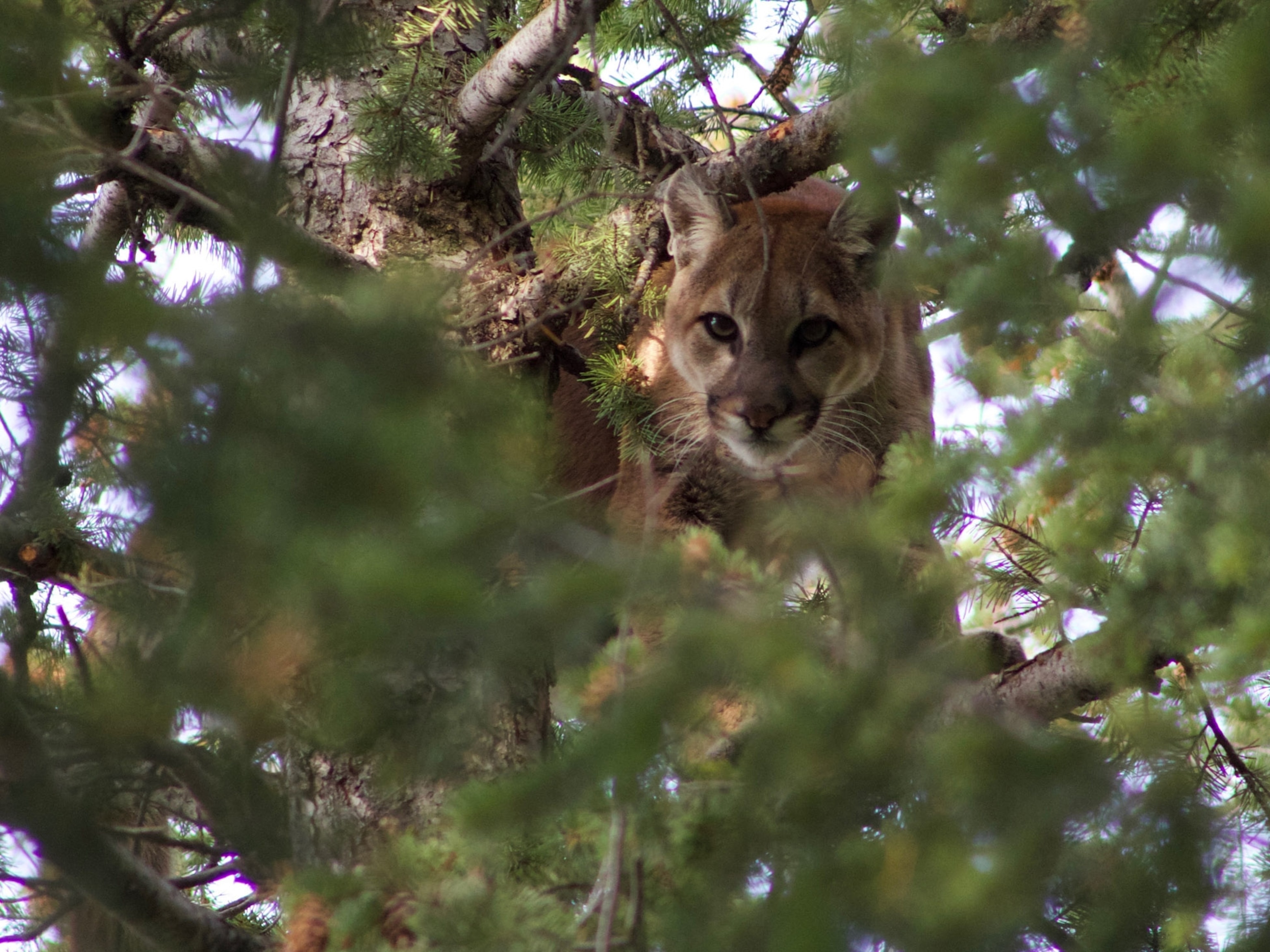
A Cougar Ready for His Closeup
Steve Winter captures the elusive cougar as it prowls by the iconic Hollywood sign.
Steve Winter is famous for his photographs of big cats in their natural habitats, such as snow leopards and tigers, among others. His “Ghost Cats” story in the December 2013 issue of National Geographic opens with a surprising image of a big cat, not in the wilds of India, but in a location arguably as challenging for photographing his subject—downtown Los Angeles.
Winter’s task was to illustrate cougars—also known as mountain lions—in an urban environment. His research led him to biologist Jeff Sikich, whose work with a mountain lion population in the Santa Monica Mountains National Recreation Area on the outskirts of L.A. seemed promising. “Science-wise, this guy really knew what he was doing,” says Winter.
Winter knew that if L.A. was his city, he wanted movie stars. He had worked with big cats for many years and knew the importance of connecting these cats to something immediately recognizable. Having heard through the grapevine that a cougar was once spotted in Cher’s backyard, he quizzed Sikich about the particulars of the mountain lion population’s comings and goings.
Winter recalls saying to Sikich, “Wouldn’t it be great to get a photograph of a cougar with the Hollywood sign … ”
But it didn’t seem likely. So elusive that few people ever see them, many of the animals being tracked by Sikich would leave the Santa Monica Recreation Area only to turn around and go back. And even if they did make the trek, they would risk being struck by cars crossing two busy freeways in between, the 405 and the 101.
Eight months later, Winter received an email from Sikich that said: “You’re not going to believe this, because when you said this to me I thought you were crazy.” A trail camera put in place as part the Griffith Park Connectivity Study to monitor passing wildlife had photographed a cougar that had crossed the 101 freeway by the Hollywood Bowl and gone into Griffith Park, home of the Hollywood sign. The game was on.
“I immediately call my editor Kathy Moran to tell her I’m going to go out and figure out how we can get a photograph of this cougar … with the Hollywood sign,” says Winter.
Winter then faced the challenge of setting up—and securing—camera traps that he would use in this attempt. Despite being heavily chained and locked, three out of the four cameras he set up were stolen. The camera used to capture this photo was the only one that survived. “It was on an animal trail, not a human trail,” Winter says, “mostly all I’ve seen (on that trail) are prints of other animals. I see prints of cougar food.”
Fourteen months later, a photograph with the cougar and the sign was achieved. You might think that would be the end of it.
“Everybody was very happy, but I wasn’t happy. We are all our own worst critic or best critic. I went back to L.A. and changed the lighting so a shadow would appear around the cat’s neck so you would not see the collar [as much]. People were just happy that I got it, but then it’s like, we can do better. So I wanted to do better, and I knew I could.”
So Winter tried again, and this time got the lighting just right. When asked how it felt to have succeeded, he had this to say:
“This story was extremely difficult. The mountain lion is a very secretive animal. It has to be in order to show up in downtown L.A. and have no one ever see it but the scientists, and so it was a great relief when you have a picture like this that can become iconic. You talk about urban wildlife and, boom, there’s the picture.”
Steve Winter’s work with cougars has not stopped with photography. He is partnering with the Annenberg Foundation later this year for a fundraiser to help build a wildlife tunnel across the 101 freeway in Los Angeles.




